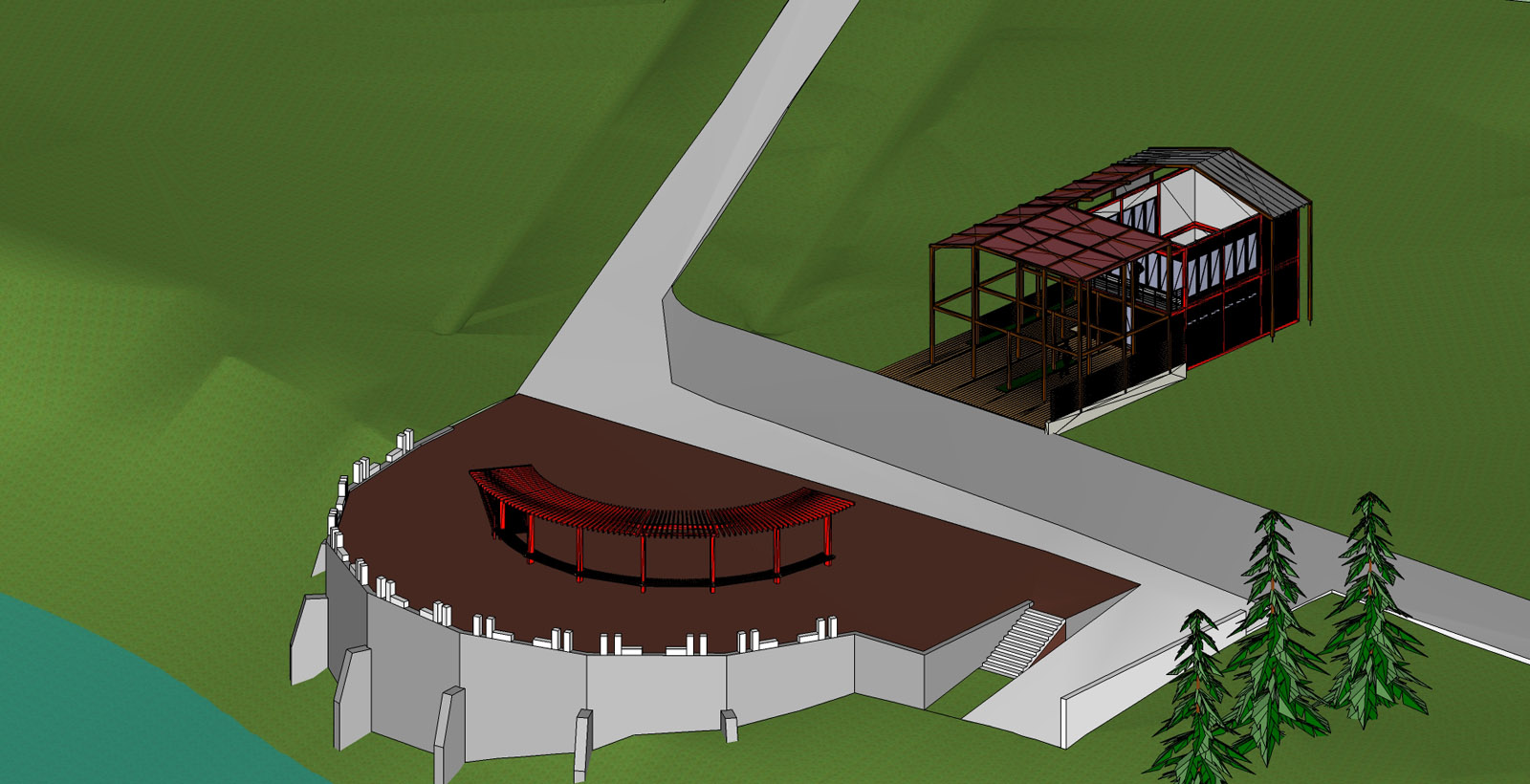I need some insane architectural ideas.
-
Situation:
New housing estate. Giant virgin soil with some roads. Beautiful River, which is the main (сommercial) showplace/attractions.
Road leading from entrance to river, entrance itself, promenade and pier, must be the most representative for customers. To reach that, we need to use something very original and low cost. Small architectural forms, archways, sunshades, canopy, and etc.Objective:
To reach most extraordinary, unusual style concept, so that when people saw it, he said "Wow!", and took the camera to make photos. Something futuristic, delicate... And not expensive to build.Model, with photos and satellite view:
http://zalil.ru/30836709
mirror: http://rapidshare.com/files/456830237/river.skp
mirror: http://narod.ru/disk/9834336001/river.skp.htmlP.S: File ~6 mb, toobig to attach.
To see normal photos (in model), just adjust opacity of it's material.


-
well that's not asking too much.

-
@unknownuser said:
well that's not asking too much.

What you mean? I need Ideas... Something very unusual... I tried it myself a lot of variations, but even High-tech, bio-tech style constructions was too ordinary -
I'm just saying that's a tall order. I'll have to ponder it for a while. I might come up with something...
-
Thanks a lot. This task not so hard as it looks. And it can be really built.

-
@unknownuser said:
Why am I always the cop!!!
 ....that .ru url connected my browser to a script nightmare. If you have clicked this fellows .ru link be aware that it is highly intrusive.
....that .ru url connected my browser to a script nightmare. If you have clicked this fellows .ru link be aware that it is highly intrusive.Ouch... Do you see second link with .com ? I can download model to other hosting, just say which.
-
*First link may offer you to download *.htm file. Its not hosting problem, its opera bug (if you use it), same as at gmail. Other browsers offers to download .skp, try it.
-
Well, that is just a simple file sharing site. Many hosted in the US or Western Europe are equally or even more intrusive (IMO - just as an experience). That's just the "price" for using a free service.
-
Hi Erhett.
Have you considered the British architect Richard Rogers? Rogers did these budget newbuilds in Oxley Woods, in the UK.
Tom

-
-
That looks like something my dog coughed up yesterday.
-
Looks like a mangled sneaker, to me.
-
Cool intégration!

-
Uhh. Hire an insane architect?
-
Will Alsop. Another very high at the top of the list faves!

and another;

-
What if you did nothing? Left the site alone. Let the world be. Proposed not to build, but to experience the place as it is.
That would be a radical departure from business as usual. -
@bmike said:
What if you did nothing? Left the site alone. Let the world be. Proposed not to build, but to experience the place as it is.
You'd be a very boring anti-progressive with no friends (or money) loner.
Who wants to live like that?


-
@tfdesign said:
@bmike said:
What if you did nothing? Left the site alone. Let the world be. Proposed not to build, but to experience the place as it is.
You'd be a very boring anti-progressive with no friends (or money) loner.
Who wants to live like that?


the reason notes have such power in music is because of the spaces in between.
-
Erhett,
I suggest you get the ball rolling with some of your own ideas and then post them here for some advice and support. Even "crazy" takes a lot of time to develop.
jon
-
Thanks for attention my question!
@tfdesign said:
Hi Erhett.
Have you considered the British architect Richard Rogers? Rogers did these budget newbuilds in Oxley Woods, in the UK.
http://www.richardrogers.co.uk/work/all_projects/design_for_manufacture_oxley_woods/completed
TomHi, Its cool, but... It too expensive for now. Structures + facing + glazing... And this style is already not unique.
@pixero said:
Is this insane enough?

There's much more here: http://www.evolo.us/
Thanks. Its cool too. And expensive too...
bmike, its fun. but its not central park in big city. Its big housing estate ~50km from Moscow. What will be the difference to other lands?
My ideas:
First, early variant - to build prefabricated shipping containers with facing... 2 floors, full glazed surfaces. But is have too primitive appearance.Now im thinking about wood structures...
Part of land. Promenade and pier are existing. Sorry, i cannot send model right now - troubles with connections.

Advertisement








